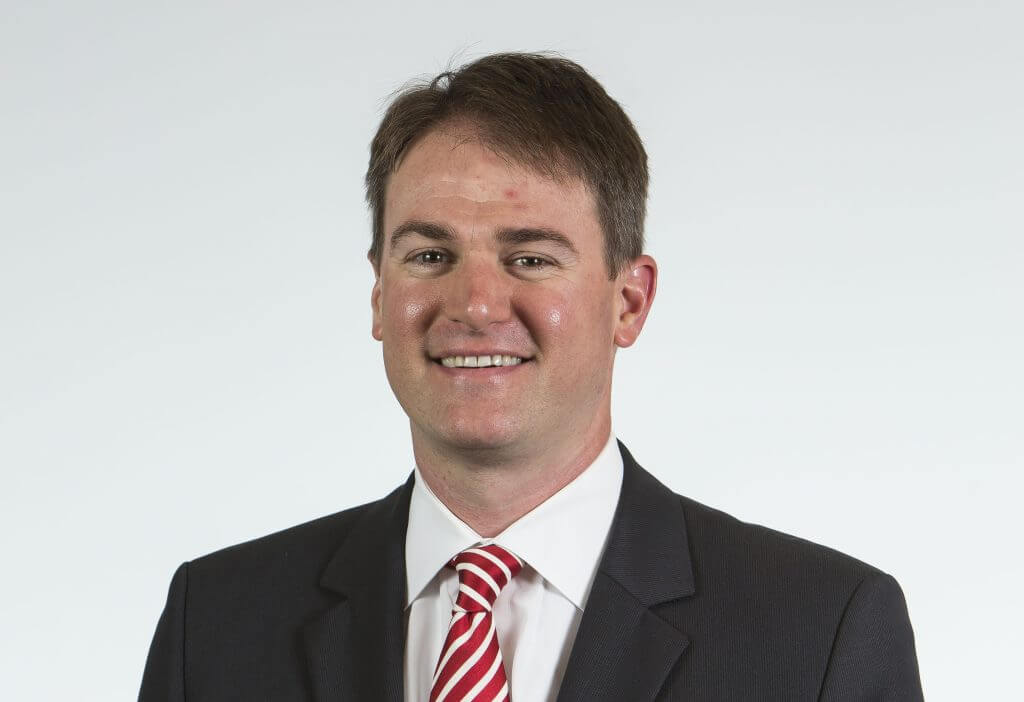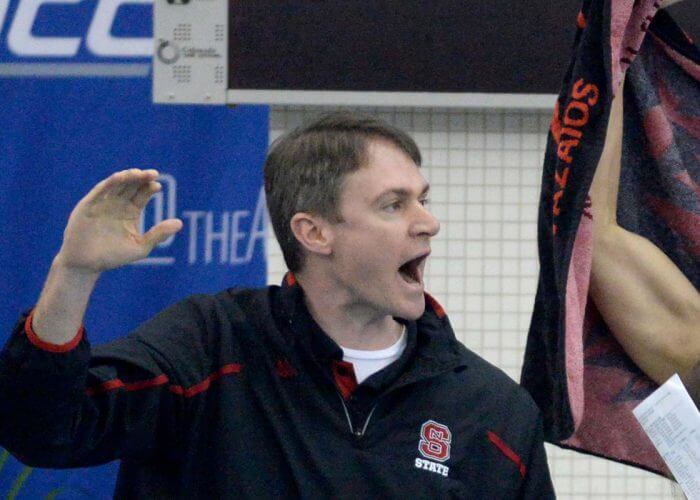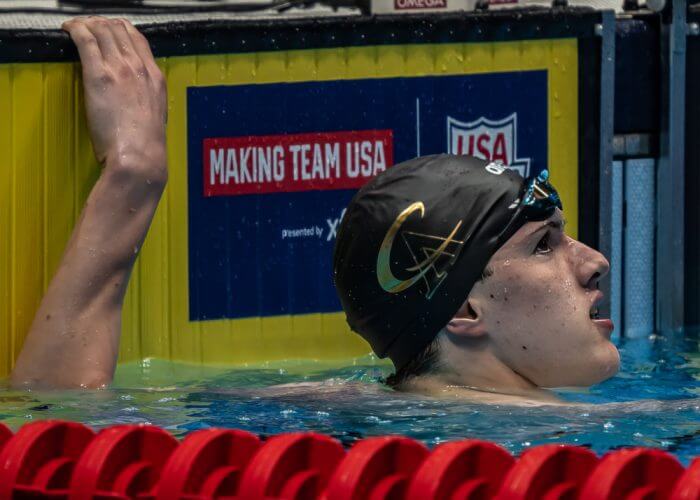Q&A with Coach Gary Taylor: Guiding Age-Group Star Thomas Heilman and Using Influence in Coaching

Q&A with Coach Gary Taylor: Guiding Age-Group Star Thomas Heilman
With Thomas Heilman set to race at Speedo Juniors East, Swimming World is running this piece from the archive that includes discussion of Heilman’s training under the watch of coach Gary Taylor.
A seasoned college and club coach, Cavalier Aquatics head man Gary Taylor has spent the last three years training a strong cadre of senior swimmers to national and international prominence, including 2024 Olympian Thomas Heilman. In September, he reunited on deck with friend, Todd DeSorbo, at the University of Virginia.
Gary Taylor
Associate Head Coach
University of Virginia
Charlottesville, Virginia
- University of Minnesota, B.S., sport management, 2001
- Associate head coach, University of Virginia, 2024-
- Head coach, Cavalier Aquatics, 2021-24; Gold Medal team, 2023; Silver, 2024
- Head coach, Auburn University, 2018-21
- Associate head coach, North Carolina State University, 2012-18
- Assistant coach, Florida State University, 2008-12
- Coach, Dynamo Swim Club, 2005-08
- Lead site coach, Twin Cities Swim Team, 1999-2005
- Georgia Age Group Coach of the Year, 2007
- Primarily a distance coach at NC State, where 11 of his athletes set school records…and earned 97 all-time top-10 performances
- Coached Anton Ipsen and Justin Ress to ACC Male Freshman of the Year honors in 2015-16
- Cavalier Aquatics/Piedmont Family YMCA finishes at Y Nationals:
Women Men Combined
2022 4th 1st 1st
2023 9th 1st 3rd
2024 6th 8th 6th
SWIMMING WORLD MAGAZINE: You were a four-year varsity swimmer at the University of Minnesota. How did you get your start as a swimmer?
COACH GARY TAYLOR: In the summer of 1986, family friends suggested I join a local summer league team, the Mountain Shadow Sharks. I had a really positive experience and began swimming year-round that fall for Gwinnett Aquatics, which merged with Dynamo Swim Club about 12-18 months later.
SW: As a coach?
GT: In February of 2000, following the end of my swimming career at Minnesota, I needed money while finishing college. I had a great first experience with the Minnetonka Swim Club and coach Jim Anderson out of the University of Minnesota.
SW: At Dynamo Swim Club and NC State, there was an emphasis on doing what was necessary to be great every day. You have promoted that mindset with your Cavalier athletes.

Photo Courtesy: Sarah D. Davis/theACC.com
GT: I believe it’s always important to set a standard of high expectations in order to achieve greatness. That begins with commitment, coachability, work ethic, goal setting and being a great teammate. My senior staff constantly preaches ownership and responsibility as paramount to long-term success. Hard work on a daily basis allows swimmers to perform fast in workout. Training fast allows the mind and body to race fast.
SW: Stretch cords and underwaters are a huge emphasis for you. What are the benefits of setting the cords at 12.5 yards or meters?
GT: Learning how to manage oxygen deprivation is highly important if you are going to grow the length of your under waters. We use the cords for fast, explosive performances under water—and that includes kicking and swimming aerobically. Learning to be great under water and managing fatigue takes an awful lot of discipline.
SW: You also use swim bridges, yes?
GT: In several specific ways—from jumping off the wall with a tight streamline to using specific kick counts. We also set them up similarly to cords for aerobic work.
SW: Mastering underwaters and swimming in and out of walls is a huge point of emphasis for you.
GT: Jumping off walls, squeezing streamlines, Cavalier Kick CT (4 UW DKs), kicking out to 15 meters, focusing on chin-to-chest and becoming a ball at the wall is something we discuss and work on regularly.
SW: Were you surprised Thomas Heilman made the Olympic team in two events?

thomas-heilman-
GT: There are no givens when it comes to Olympic Trials and making the U.S. Olympic team. However, I have always had faith and confidence in Thomas. I will always take him over the field at any competition, and it’s my responsibility to make sure he knows I believe in him.
SW: You took four swimmers to this year’s Olympic Trials: Heilman, David King, Max Moore and Sara Czirjak. What was that experience like for them?
GT: All four will tell you it was the most exciting environment and competition they have ever attended. Each handled the meet and their emotions extremely well for first-timers. They represented Cavalier Aquatics with great pride and raced with passion. We had some fantastic swims throughout the week. I credit them for living in their process and being in the moment.
SW: And what message did that send to the other Cavalier Aquatic swimmers?
GT: It all begins with a dream. If you are willing to embrace the daily process and work toward your goals, you can achieve those dreams in Charlottesville with Cavalier Aquatics. This program is capable of helping swimmers on local, state, regional, national and international levels. The CA-Y staff takes great pride in knowing anything is possible for our program and swimmers.
SW: From whence comes your orientation for five-stroke training and development in the 400 IM and 200s of strokes?
GT: Jason Turcotte, my mentor at Dynamo, instilled this mindset. Assisting swimmers to improve in these areas allows them to become well-rounded and excel in ALL events. As age group coaches, it’s our responsibility to develop a large event list for swimmers so that down the road, they can find their premier events.
SW: How do you prepare your team to be ready to go in the morning?
GT: In my opinion, swimming at 5:30 a.m. consistently allows our swimmers to take ownership and builds character. Getting up early on a regular basis can be difficult, and in order to perform, you must be committed and responsible. Our swimmers understand what’s needed to wake up and perform at a high level early in the morning. By the time we get to a prelims/finals competition, our group typically feels like they get to sleep in. Our swimmers tend to compete well in the morning because they are asked to do so daily.
SW: Your boys swam lights-out at Winter Speedo East, winning three out of five relays and setting two meet records. They’d been dreaming about those performances for a while, yes?
GT: I am very lucky to coach a group of committed, driven boys who have strong skills in the pool. They do dream big, and they felt early on in the season that they were capable of winning all five relays. While this was the goal, we didn’t discuss this much afterward because we focused on the process.
They were pleased, but not satisfied, with the outcome. They came within hundredths of winning all five, but credit Bolles and NAC for two fantastic performances.
SW: You prepare swimmers these days for college swimming careers. What will college swimming look like in five years?
GT: I wish I had a crystal ball because I am sure many are wondering this same thing. My hope is that college swimming will be supported and becomes even stronger over the next five years. It’s an outstanding experience for those involved, and it’s played a major part in the U.S. becoming strong on the international level. I’d prefer not to think about a world without Olympic sports at the college level, so it’s important we all take on the role of supporters regardless of how small this role might be.
SW: For better or worse, you love University of Georgia football. Who is your favorite player of all time?
GT: Both of my parents attended UGA, and I have many memories as a young boy heading to the games with my father. They were some of my very favorite moments growing up! You couldn’t be a Georgia fan in the ’80s without idolizing Herschel Walker. He was superhuman…and for my money, the greatest college running back of all time!
SW: Who was the better swimmer, you or your brother, Matt?
GT: It’s not even close. Matt became a Big Ten champion and multi-time All-American in the early-2000s. My greatest feat as a Gopher was helping convince him to join me at Minnesota. Dennis Dale meant a great deal to both of us and our family. Kelly Kremer was Matt’s primary coach, and Matt took off under his tutelage.
SW: How was the transition from club to college…and then back from college to club?
GT: The transition from college back to club swimming was relatively seamless. Athletes are athletes whether they’re 13-14 or 20-21 years of age. Coaching is about connecting with the athletes, providing technical development and implementing a training plan that allows them to flourish. College athletes are obviously more mature both physically and mentally, but they are all young people and want to know you enjoy and appreciate them for who they are.
The primary differences between the two seem to be off of the pool deck. On the club level, you are spending substantially more time working with parents, communicating and educating throughout the process. Recruiting future prospects and their families is the lifeblood of any college team. Both groups have similarities. The coach’s ability to effectively communicate and share passion for the program is key for long-term success.
SW: And this month, you have returned to a college pool deck.
GT: I am honored to return to college coaching with UVA Swimming and Diving led by Todd DeSorbo. Ultimately, this position was the best situation for both me and my family. The UVA program has a rich history of success, which has only grown in recent years under Todd and his staff. He has fostered a culture of excellence. UVA successes on the national and international levels are well-documented. Beyond this, Todd and I have had a great past working relationship and know each other well. I am excited to represent UVA Swimming and Diving, and I look forward to continuing to raise the bar at Virginia.



